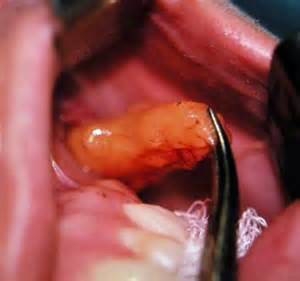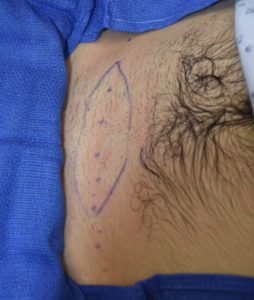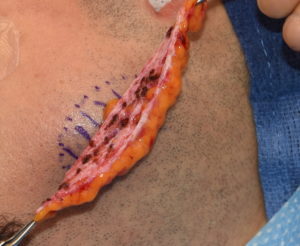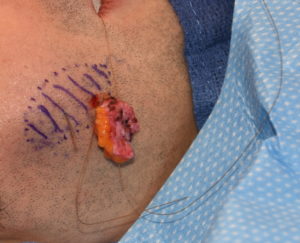
But like all facial reshaping procedures, the risk of unhappiness with the outcome can occur. While by far the largest dissatisfaction from buccal lipectomies is due to insufficient or incomplete improvement, too much reduction or midfacial collapse is also possible. Fat grafting is the obvious buccal lipectomy reversal approach of which traditional injectable techniques should suffice in most cases. But getting the injected fat into the buccal space and how well the injected fat will survive is not always completely assured.
An alternative approach to buccal lipectomy reversal is the use of dermal-fat grafts. This is a traditional fat grafting technique that has become largely overlooked with the more versatile injectable methods. While its use is far more limited due to the need for excisional harvesting, they can be placed precisely and has a high survival rate. For some patients this may be preferred particularly if they have had a failed injection treatment.
Case Study: This male had a prior buccal lipectomy procedure which he felt left him less full externally over the buccal space area. While injection fat grafting was offered, he preferred dermal-fat graft placement


This suture pull through technique is valuable technique for placement of many types of dermal-fat grafts. It more assuredly places the dermal side of the graft where desired and ensures that it is more stretched out into the recipient site. At the least it is a more precise placement method than merely stuffing the graft into a hole of the recipient site.
Case Highlights:
1) Undesired effects from a buccal lipectomy necessitates fat grafting for permanent autogenous improvement.
2) One method of buccal lipectomy reversal is the intraoral placement of dermal-fat grafts.
3) Accurate placement of intraoral dermal-fat grafts into the buccal space is aided by a percutaneous suture technique.
Dr. Barry Eppley
Indianapolis, Indiana





